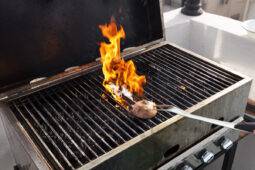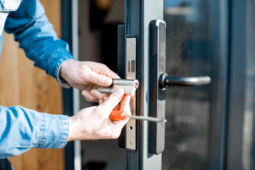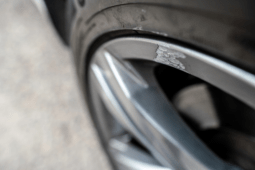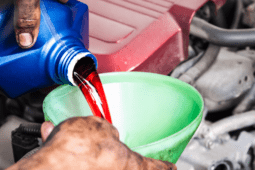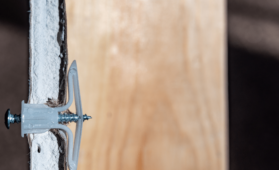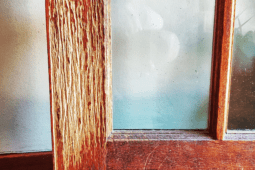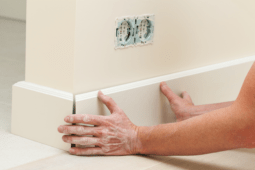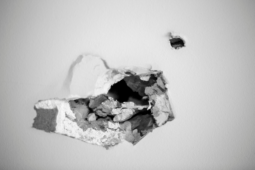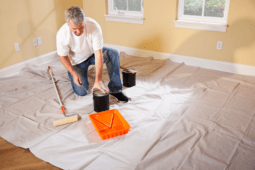How to Get Paint Off Hardwood Floors (Latex, Water & Oil-Based)
Nothing does it better than a fresh coat of paint to beautify and give a room a new look and feel. There’s nothing like picking out a new color and giving a room a glow-up, but with painting comes the task of making sure you keep it off your floors. Try as you might with drop cloths and painter’s tape, sometimes accidents are bound to happen.
If you tried your absolute best to keep paint off your hardwood floors but unfortunately had some accidents, don’t despair paint can be removed from hardwood — not all hope is lost! This article will tackle how to remove paint from hardwood and arm you with the knowledge you need to clean up your floors!
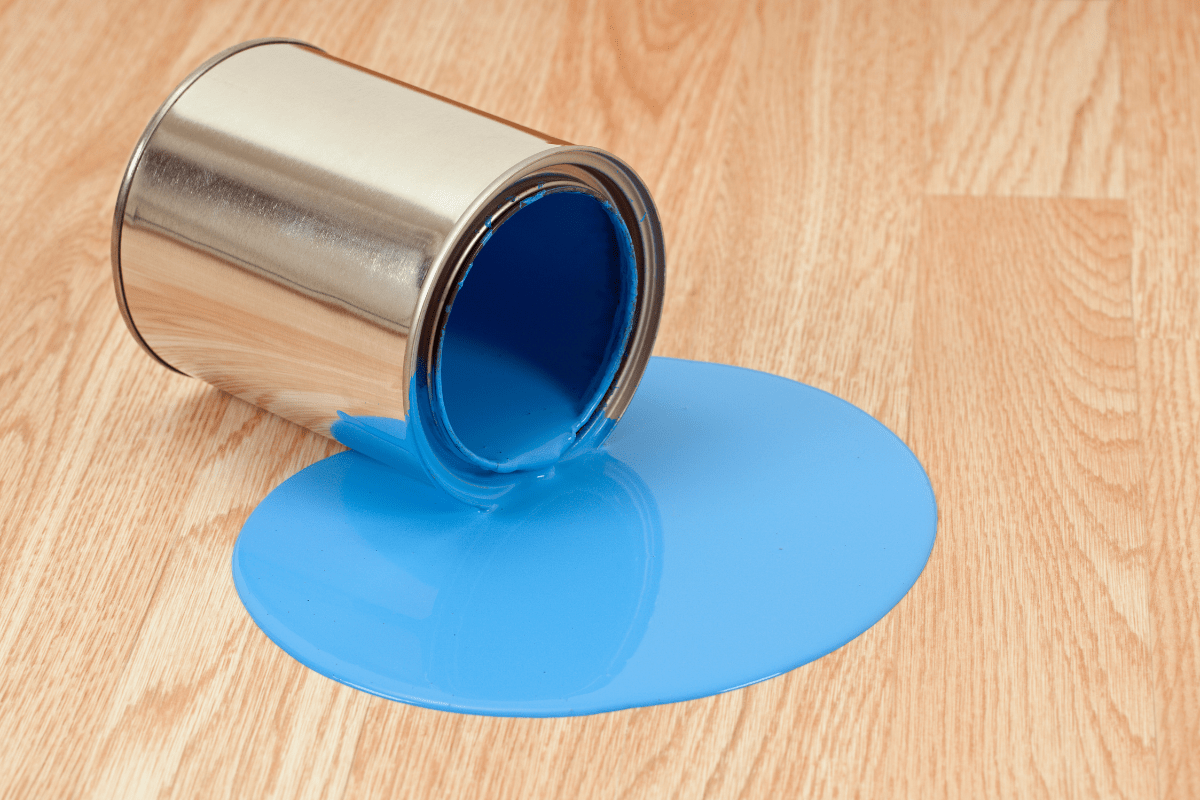
How To Tell What Type of Paint You Have Spilled on Your Hardwood Floors
Before we get into how to remove paint from hardwood floors, it’s vital to know what type of paint you have spilled, as this will greatly improve your success in removing the paint and help you out with which one of these methods you will want to use.
The first thing you will want to do is check the can or bottle of paint that you used. The packaging will tell you what the type of paint is. It will either be water-based, latex-based, or oil-based paint. In cases where you maybe don’t have the packaging anymore or it has rubbed away, you can saturate a cotton ball in rubbing alcohol and pat it on a small patch of the painted floor. If the paint comes off it is either water or latex based. If none of it comes off, then you have an oil-based paint stain on your hardwood floor.
How to Remove Water-Based Paint from Hardwood
Soap and Water
If paint is water-based, that automatically means that water can be used to remove it. Water will act as a paint thinner in these types of cases.
Materials:
- Dishwashing soap
- Warm water
- Clean Rags
- Bucket
How to do it:
- Step 1: Add warm water and a squirt of dishwashing soap into a bucket and then mix till you have soapy solution.
- Step 2: Taking your clean rag, dip it in the solution and then apply it to the paint stain on your hardwood floor
- If your paint is still wet, it should clean up immediately; if it is dry and not coming off, leave the rag to sit on the paint for a little bit to soften it.
- Step 3: Repeat the application with the clean rag until the paint has washed away.
- Step 4: Grab a dry clean rag, wipe up any water, and dry the floor.
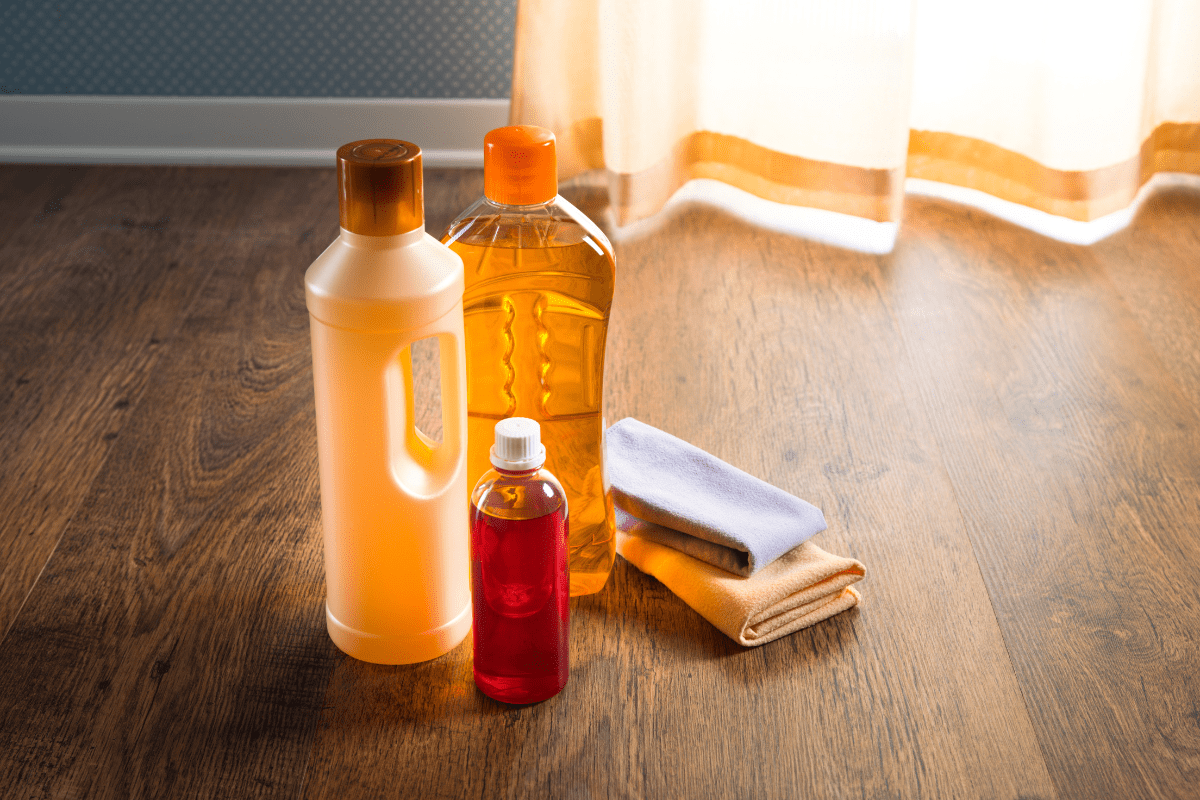
Rubbing Alcohol and Lemon Juice
This is an easy mixture to make and is quite effective for removing water-based paints from hardwood floors.
Materials:
- Lemon Juice
- Rubbing Alcohol
- Bucket or container
- Clean rags
How to do it:
- Step 1: Mix one part of lemon juice with three parts of rubbing alcohol in a container or bucket. Dip a clean rag in the mixture, rub the stain on the floor with the soaked rag, and let it sit for about 5-10 minutes. This allows the paint to loosen.
- Step 2: Rub the paint off using the same rag you used to apply the mixture in circular motions, back and forth, to remove the paint. If there is stubborn paint, use a floor scrub brush to get it out from hard-to-reach crevices.
- Step 3: Wipe the wood with a wet rag to remove the paint
- Step 4: Repeat the process until you have removed all the water-based paint.
- Step 5: Clean up and dry any water on the hardwood floor with a clean dry cloth
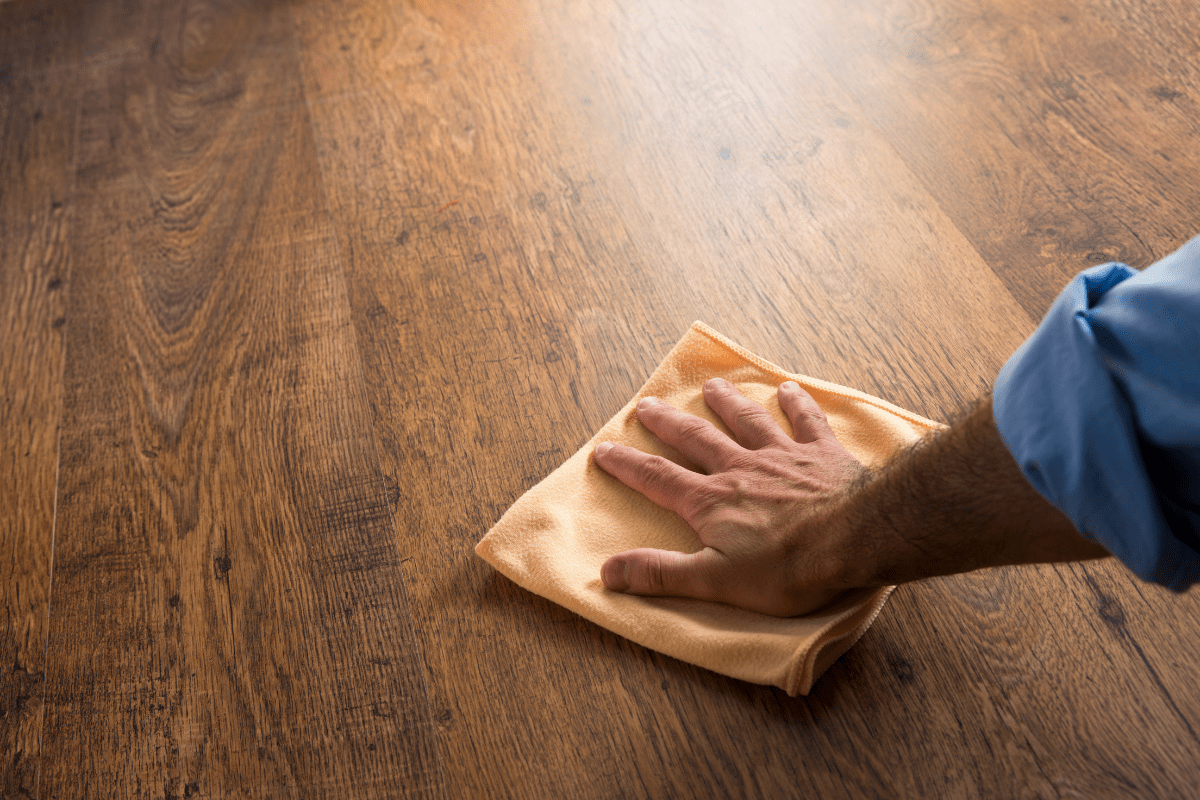
Sanding
If your water-based paint has been on your hardwood floors for while and has had time to dry sufficiently, then using a sander may be the best option.
Materials
- Handheld electric sander
- Sandpapers – 60, 80, and 120-grit
- Safety glasses
- Vacuum cleaner
- Clean rags
How to do it:
- Step 1: Using the electric handheld sander, sand the floor using 60 grit sandpaper. This will take care of thick layers of paint. Vacuum up the debris and sanded dust off the floor.
- Step 2: Switch from the 60 grit to the 80 grit sandpaper. Sand again to remove more paint stain from your floor, then vacuum again.
- Step 3: Move from the 80 grit to the 120 grit sandpaper. Continue to sand to remove most of the stain from the hardwood floor. The finer the sandpaper grit, the smoother and even the wood. The higher the number of the sandpaper, the finer it is.
- Step 4: Continue to sand until the paint stain is gone.
- Step 5: Give the wood a final wipe with a damp cloth to remove any excess paint and sanding marks.
It’s also a good idea to wash the floor after removing paint with a sander.
How To Remove Latex Paint From Hardwood Floors
If the paint you have spilled on your hardwood floor is latex paint, you’re in for a little more work. Latex paint is hard to get off a hardwood floor than water-based paint but not impossible. There are a lot of alternatives you can use for removing latex paint from hardwood floors.
On the plus side, latex paint is less likely to descend into wood floors than water-based paints, so you’re less likely to have added deterioration after removing paint from the floor’s surface.
Paint Stripper
A paint stripper is one of the best options to remove latex paint that is dry and hardened onto your hardwood floor.
Important: Make sure you use a formula designed to work on latex-based paint instead of oil-based paint. You will also want to test a small area of the floor that is hidden to ensure that the stripper doesn’t change the color or finish of your floor.
Materials
- Paint Stripper
- Clean Rags
How to do it:
- Step 1: Apply a small amount of paint stripper directly onto the paint stain and wait about 20 minutes or until the stripper starts to bubble.
- Step 2: Use a clean rag and blot, and lift the paint and paint stripper together
- Step 3: Once you have removed all the paint stains, clean the floor with warm soapy water and dry thoroughly.
Heat
Another good option for removing latex-based paints from hardwood floors is heat. Heat works because it can actually shrink the paint in on itself and help lift it off the underlying surface. This method might not remove all the paint if it’s soaked into the cracks in your wood floors, but it can be a good way to remove a large percentage of the paint.
You can use a crafting heat gun, or sometimes even a hair dryer will work.
Materials
- Heat gun or hair dryer
- Metal scraper
- Clean rag
How to do it:
- Step 1: Turn on the hair dryer or heat gun, hold it roughly 6-8 inches away from the floor and wave it across the surface of the paint.
- Make sure you heat the paint evenly to get a better lift
- Step 2: Use a metal scraper to help lift the paint once it starts to wrinkle on top.
- Step 3: Keep going with the heat until you’ve either removed all the paint or the paint stops wrinkling and lifting free of the wood floor.
- Step 4: Use clean rags and soapy water to wash and clean the area. Dry thoroughly.
Steam
If the idea of heat bothers you or maybe you don’t want to mess around with chemicals, using steam may be more appealing. This method takes a bit of patience, but it does work! It’s also environmentally friendly, too!
Materials
- Steamer
- Plastic putty knife
How to do it:
- Step 1: Hold the steamer about three inches away from the surface of the floor. Hold it there for about 20 seconds applying direct steam
- Step 2: Check for bubbles beginning to form on the latex paint surface.
- Step 3: As the latex paint begins to bubble, use your putty knife to scrape off the latex paint from the hardwood floor.
- Step 4: Repeat the process on all the areas where you want to remove the latex paint.
- Step 5: Moisture may be on the floor, so make sure you dry the floor well.
Paint Scrapper
If the latex paint is at the drying stage where it’s not completely dry, but it’s not fresh and wet, where it almost has a gummy tacky consistency, you can simply use a paint scrapper to pull it up off your hardwood floor.
Simply take your paint scraper and, going under the paint, pull it up and off the floor. Then just follow up with a clean damp cloth to wipe away any paint that got left behind.
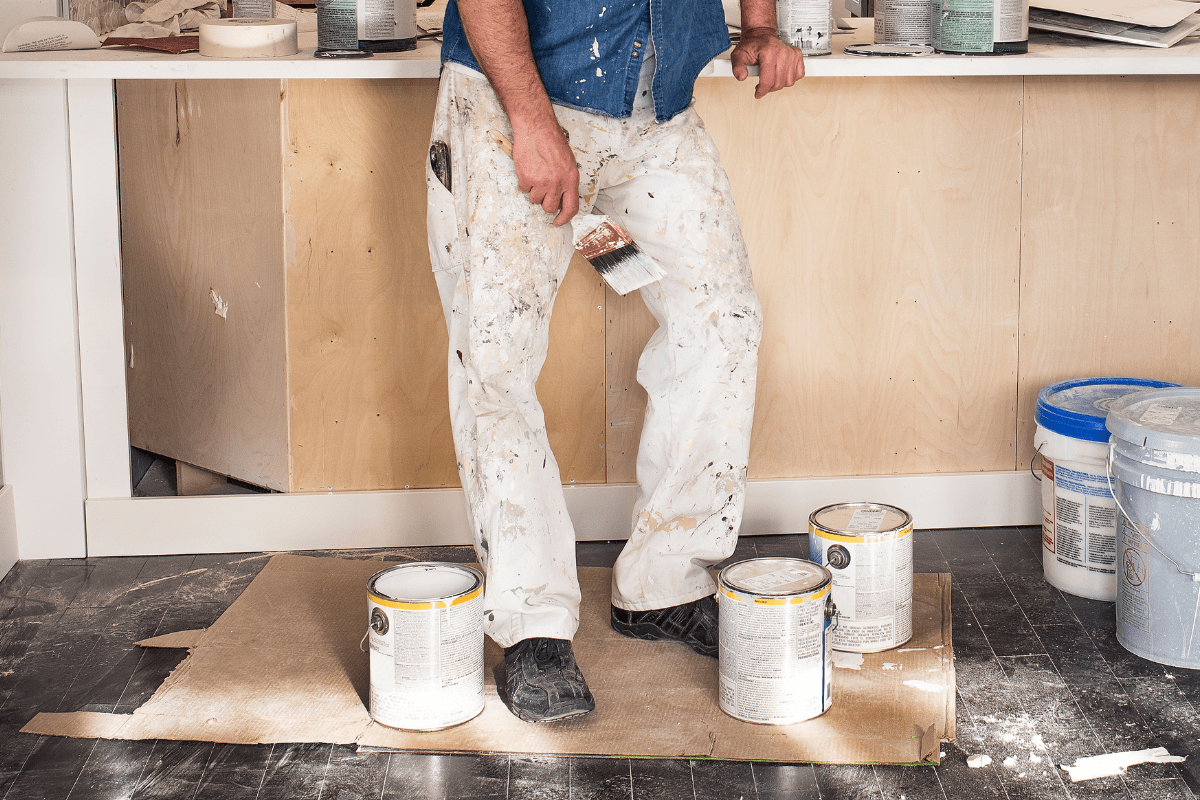
How to Remove Oil-Based Paint from Hardwood Floors
Oil-based paint is the hardest to remove, and that goes for any surface, but if you have spilled oil-based paint on your hardwood floors, not all hope is lost. Here are some methods that you can use to remove it.
Sanding
Sanding was great for latex paint, and it works just as well for oil-based paint, too! This method is for oil-based paint that is dry and hardened on the hardwood floor.
Materials
- Power sander
- Sandpaper—60, 80, and 120 grit
- Handheld sander
- Vacuum cleaner
- Safety glasses
- Clean rag
How to do it:
- Step 1: Begin sanding with 60 grit sandpaper, making sure you sand along the wood grain. The less grit, the more the paint is likely to come off.
- Step 2: Clean up the dust and debris, switch your sandpaper to the 80 grit sandpaper, and sand again.
- Step 3: Switch the sandpaper to 120 grit and continue sanding.
- Step 4: Vacuum to clean the wood floor after sanding one more time. In a case where you find some paint left in hard-to-reach areas, use the handheld sandpaper to remove paint from corners and floorboard crevices.
- Step 5: Once all paint is removed, thoroughly clean the floor and dry it well
Paint Stripper
Materials
- Paint stripper
- Painting brush
- Firm-bristled brush
- Mineral Spirits
- Putty knife
- Gloves, mask, and goggles
- A rag
How to do it:
- Step 1: Use a paintbrush to apply the paint stripper to the stain on the hardwood floor. Be sure to apply a gracious amount and leave it to exude into the hardwood for about 30 minutes to an hour.
- Step 2: Once the dried paint is soft enough and ready to lift off, scrape it off gently.
- Step 3: Use mineral spirits and a firm-bristled brush to remove dried paint from hard-to-reach corners and hardwood crevices.
- Step 4: Clean the hardwood floor with a damp rag to ensure you leave the wood free of any chemical or dried paint remnants.
Heat
Much like we talked about using heat to remove latex paint, you can also use it to remove oil-based paint. Although with oil-based paint, you will probably need an actual heat gun instead of a hair dryer.
Materials
- Heat gun
- Putty knife
- Face mask
- Heatproof gloves
Important! – Have a fire extinguisher close by just in case a fire breaks out.
How to do it:
- Step 1: Hold your paint scraper in one hand, and heat the dried paint using a heat machine on the other hand.
- Step 2: Test if the dried paint is weak and can peel off while you heat. Have the heat machine about eight inches away from the wood to evade burns.
- Step 3: Peel the dried paint that’s keen to come off. Continue in the same manner until you are satisfied with the new state of your wood floor finish.
How To Clean Up Small Paint Splatters on Harwood Floors
So we have covered big drips of paint and how to clean them off, but what about paint spray or splatters? This is a whole different ball game!
Here are some helpful tips for help with cleaning up paint splatters off hardwood floors:
Paint Scrapper
Using this approach can remove both water-based and oil-based paint splatter on hardwood floors. For this chore, you will need a rigid plastic putty knife and a damp rag.
Start by tipping the paint scraper and using enough pressure to extract the paint splatter. Scrap it off as many times as required, then wipe the dried paint off the wood with a clean rag.
Soap and Water
This is the best way to get splattered paint off hardwood floors and is most proper for water-based paint.
Wet the paint with warm soapy water using a clean rag. Let it sit for a minute or more, depending on the size of the splatter. Then use a non-abrasive scouring pad to clean the soaked paint. Lastly, wipe the wood clean with a damp rag.
Steamer
Releasing steam, hold your steam close to the paint splatter for a few seconds. This will warm up the dried paint for an effortless paint removal job.
Next, rub the steamed surface with a damp rag to clean the paint splatter from the floor.
Hand Sanitizer
The alcohol in the sanitizer helps to break down the paint and makes it effortless to remove.
Apply the sanitizer to the paint and let it sit for about 30 seconds or more, depending on the thickness of the splatter. Then rub it with an old toothbrush. Afterward, wipe the hardwood surface with warm soapy water and a clean rag.
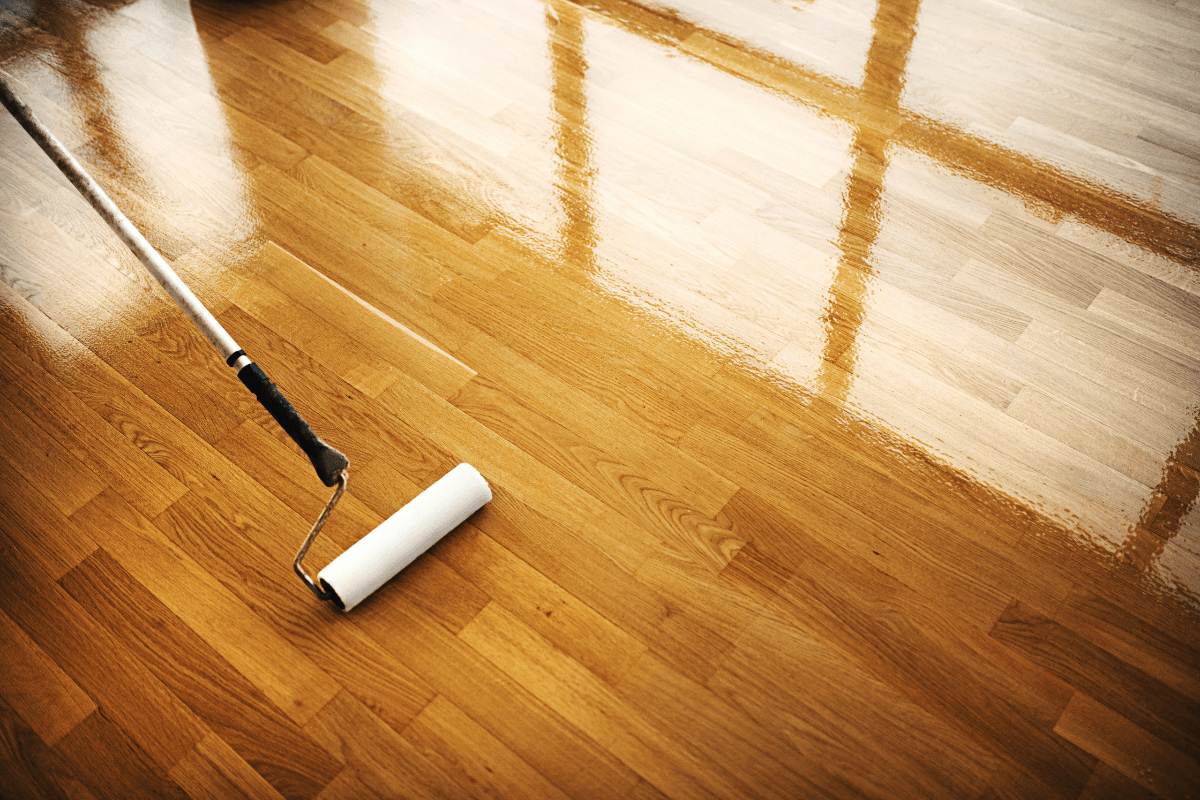
While it may be too late this time, here are a few handy tips for the next time you have to paint to help you avoid a spill before it happens.
- Ensure that you have sufficiently covered your hardwood floor with a drop cloth and tape down the drop cloth using painter’s tape so that it doesn’t move.
- Do not put too much paint on your brush or roller. Over dipping your brush and roller always leads to flying or spilling paint
- Work with little amounts of paint at a time. Avoid carrying around enormous buckets of paint — it’s better to pour paint into a smaller container than work from a large paint bucket
- Mix your paint well in a well-covered area – inadequately mixed paint does not apply nicely and can cause splatters or drippage.
- Do not juggle tools as you are working. Make sure you have adequate space to place your items and keep your hands free of multiple tools.
- When finished, make sure you close your paint can correctly to avoid future spills or accidents when storing or retrieving the paint for your next project.
Handy Tips for Before You Start
- Gather all your supplies before beginning – it’s vital to have everything you need ready before you start. You don’t want to leave halfway through to go and get supplies.
- Make sure you’re aware of which kind of paint you have spilled – there are different clean-up methods for different kinds of paint, so make sure you use the right one.
- Don’t wait to clean up paint spills – the faster you tackle the paint spill, the better. Wet paint requires less effort to remove than dried paint.
- Don’t forget safety – when working with harsh chemicals or paint strippers, always wear gloves and be sure to open any windows for proper ventilation.
Frequently Asked Questions (FAQs)
What if I damaged the finish of my hardwood floors while trying to remove the paint?
Even though we try to be as careful as we can, sometimes we can damage the hardwood floor more when trying to remove paint. If you have removed some of the finish or scratched your floor, you can always try to touch up the finish if you know the shade of your floor.
You can also get a sample board of stains and finishes to compare and see if you can find the finish to do any repair work.
Will vinegar remove paint from hardwood floors?
Vinegar does not remove paint from wood but can soften paint and make it more manageable to remove. Once the paint is softened, you may be able to peel it up with a scraper. It is a non-toxic, natural alternative to chemical paint strippers but may take a lot more effort and time than it’s worth.
Is it possible to remove really old paint from hardwood floors?
If the paint that is on your hardwood floors is really old, and maybe it wasn’t even done by you, you may be better off completely sanding down and refinishing the hardwood from start to finish.
However, if it’s just a little spot here or there, you can always try one of the methods above, and since you won’t have any idea what kind of paint it is, it’s best to stick with one of the methods in the oil-based paint section.
Does paint thinner damage hardwood floors?
Paint thinner is a harsh solvent and should only be used if other cleaning methods were ineffective. You should always test a small area on the floor that is hidden before proceeding with paint thinner.
And do not apply paint thinner to water-based paint. Solvent and water do not mix and will cause separation and create an even bigger mess. Use caution when applying paint thinner to hardwood floors, as it may damage the finish.
What is Mineral Spirits?
Mineral spirits are a liquid that is distilled from petroleum. Mineral spirits are commonly used as a paint thinning agent or as a solvent.
Though relatively potent, mineral spirits do not cause any damage to clear wood finishes and are therefore at least worth testing. You may be amazed by the results.

